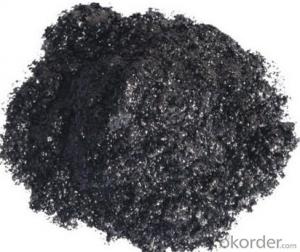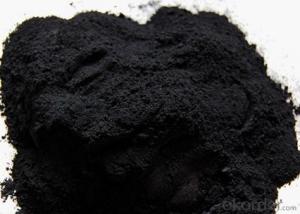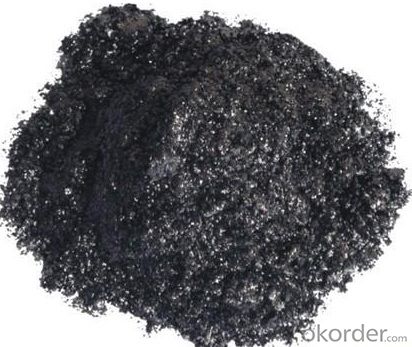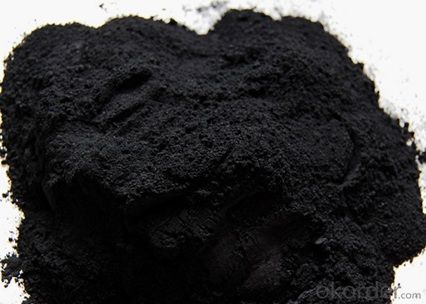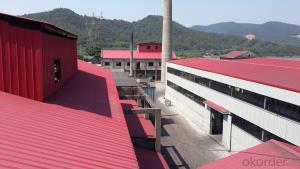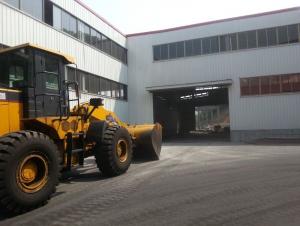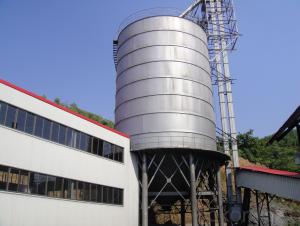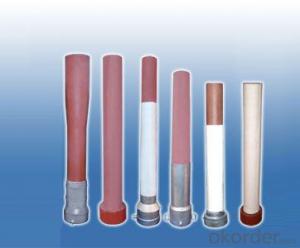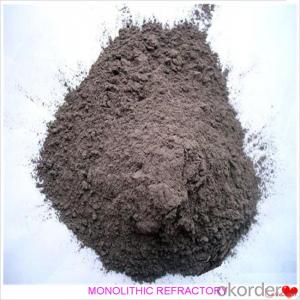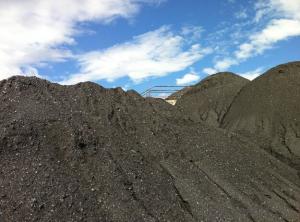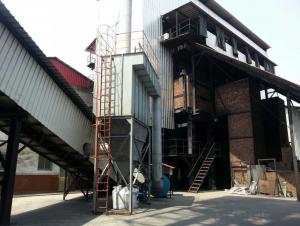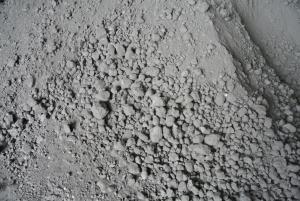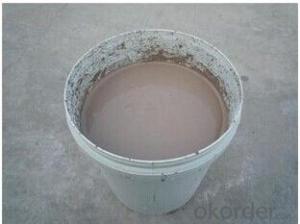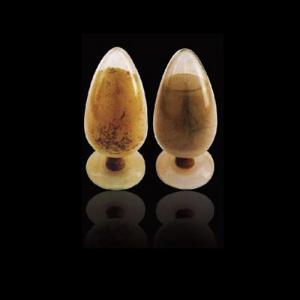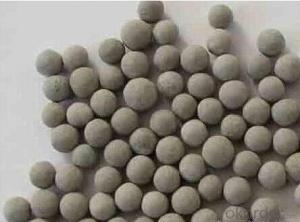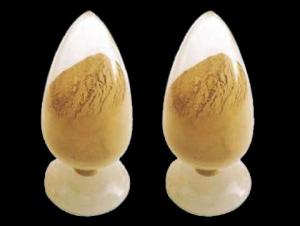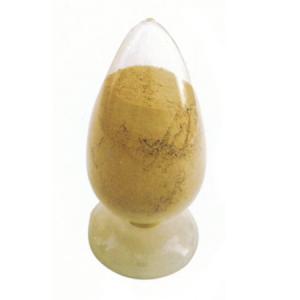Monolithic Refractories for Iron and Steel Industry:Coke Powder Based Brake Pad Making Material
- Loading Port:
- Shekou
- Payment Terms:
- TT or LC
- Min Order Qty:
- 20 m.t
- Supply Capability:
- 1000 m.t/month
OKorder Service Pledge
OKorder Financial Service
You Might Also Like
Calcined Petroleum Coke
FC:98.5%min,
S:0.5%max
A:0.8%max
V:0.7%max
Mositure:0.5%max
Size:1-5mm
Description
This product is mainly used in steel-making and foundry. Calcined Petroleum Coke
Calcined Petroleum Coke comes from delayed coke which extracted from oil refinery. Although Calcined Petroleum Coke contains a little bit higher level of sulfur and nitrogen than pitch coke, the price advantage still makes it widely used during steel-making and founding as a kind of carbon additive/carburant.
Technology:
Laborary Equpment
In our lab,we has a high precision balance,mullfe furnace,sample making machine, dring box,sulfur measurement instrument and other calibratiing equipments.As a result,before deliverung to our customers,our products have to pass a strict test to ensure the quality and components.The testing reports will be sent to our customers to confirm untill they satisfy with it.
Packaging & Delivery
Packaging Detail:25kg paper bag into 1t weaving bag 5kg, 10kg and 20kg weaving bag into 1t weaving bag 25kg weaving bag put on pallet covered with entanglement wrap product direct into packing bag 25kg paper bag put on pallet covered with entanglement Wrap 25kg weaving bag into 1t weaving bag.
Delivery Details: 7 days
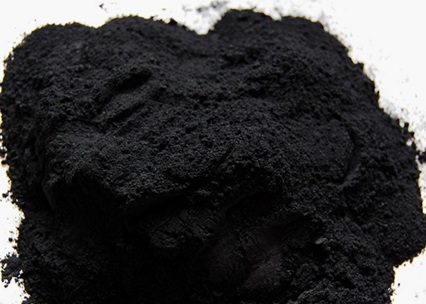
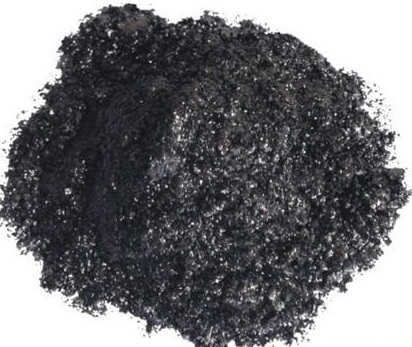
If you’ve kind enquiries, please don’t hesitate to let us know. ^_^
- Q: How do monolithic refractories contribute to energy efficiency in iron and steel production?
- Enhancing energy efficiency in iron and steel production processes is a crucial role played by monolithic refractories. These refractories, which are unshaped materials, are utilized to line the components of furnaces, kilns, and other high-temperature equipment involved in the production of iron and steel. One method by which monolithic refractories contribute to energy efficiency is through their excellent insulation properties. These materials possess low thermal conductivity, effectively reducing heat transfer from the furnace or kiln to the surrounding environment. By minimizing heat loss, monolithic refractories aid in maintaining high temperatures within the production units, ultimately reducing the energy required to sustain the desired operating conditions. Moreover, monolithic refractories offer exceptional resistance to thermal shock and wear, ensuring the longevity of the lining materials. This durability diminishes the need for frequent repairs and replacements, resulting in less downtime and increased operational efficiency. Consequently, energy is conserved as the production units can continuously operate at optimal temperatures without interruptions. Additionally, monolithic refractories exhibit excellent resistance to chemical reactions, corrosion, and erosion caused by molten metals and slag. This resistance decreases the formation of cracks and defects in the lining, which can compromise the insulation and increase heat loss. By maintaining a robust and intact lining, monolithic refractories contribute to energy efficiency by minimizing heat escape and ensuring the efficient utilization of energy for the iron and steel production processes. Furthermore, the utilization of monolithic refractories allows for design flexibility in the construction of furnaces and kilns. Their ability to be shaped and applied in various configurations enables the creation of optimized lining structures that enhance heat transfer and combustion efficiency. This flexibility empowers engineers and operators to design and modify the production units to maximize energy efficiency and minimize energy wastage. In conclusion, monolithic refractories significantly contribute to energy efficiency in iron and steel production through their excellent insulation, durability, resistance to thermal and chemical degradation, and design flexibility. By reducing heat loss, minimizing repairs and replacements, and optimizing heat transfer, these refractories play a vital role in conserving energy and improving the overall sustainability of the iron and steel industry.
- Q: How are monolithic refractories repaired or replaced in iron and steel facilities?
- Monolithic refractories in iron and steel facilities are repaired or replaced through a process known as hot repair or hot gunning. This involves using specialized equipment to heat the damaged refractory material and remove it. The area is then prepared for new refractory installation, which is done by either shotcreting or gunning the new material onto the surface. This method allows for quick repairs and replacements, minimizing downtime and ensuring the efficiency and safety of the facility.
- Q: What are the key differences between acidic and basic monolithic refractories?
- The key differences between acidic and basic monolithic refractories lie in their chemical compositions and their behavior in different environments. Acidic monolithic refractories are primarily composed of acidic oxides such as silica (SiO2) or alumina (Al2O3). These materials have a high resistance to acidic environments and are commonly used in industries where they come into contact with acidic gases or liquids. Acidic refractories are characterized by their ability to withstand high temperatures and resist chemical erosion. They are generally not suitable for use in basic or alkaline conditions, as they can react with basic compounds and lose their effectiveness. On the other hand, basic monolithic refractories are composed of basic oxides such as magnesia (MgO) or dolomite (MgO-CaO). These materials have a high resistance to basic or alkaline environments and are commonly used in industries where they come into contact with basic compounds such as lime or cement. Basic refractories are characterized by their ability to withstand high temperatures and resist chemical erosion from basic compounds. They are generally not suitable for use in acidic conditions, as they can react with acidic compounds and lose their effectiveness. In terms of their physical properties, acidic monolithic refractories tend to have higher melting points and better thermal shock resistance compared to basic monolithic refractories. This is due to the higher melting points of acidic oxides and their ability to form stable silicate or aluminate structures at high temperatures. On the other hand, basic monolithic refractories generally have higher density and better resistance to penetration by molten materials. In conclusion, the key differences between acidic and basic monolithic refractories lie in their chemical compositions and their behavior in different environments. Acidic refractories are suitable for acidic conditions, have higher melting points, and better thermal shock resistance, while basic refractories are suitable for basic conditions, have higher density, and better resistance to penetration by molten materials.
- Q: What are the environmental considerations associated with monolithic refractories?
- The environmental considerations associated with monolithic refractories primarily revolve around their production and disposal. The manufacturing process of monolithic refractories involves high energy consumption and emissions, contributing to carbon dioxide and other greenhouse gas emissions. Additionally, some raw materials used in their production, such as silica, can have negative environmental impacts during extraction. In terms of disposal, monolithic refractories are typically difficult to recycle due to their composition and structure. As a result, they often end up in landfills, which can contribute to pollution and waste management issues. Overall, the environmental considerations associated with monolithic refractories highlight the need for sustainable manufacturing practices, improved waste management strategies, and the development of alternative refractory materials that have less negative environmental impact.
- Q: How do monolithic refractories enhance the performance of ladles and tundishes?
- Monolithic refractories have a crucial role in enhancing the performance of ladles and tundishes in multiple ways. To begin with, their high thermal stability and resistance to thermal shock are well-known. When ladles and tundishes are subjected to extreme temperatures and thermal cycling during the transfer of molten metal, monolithic refractories provide exceptional insulation and structural integrity. This ensures that the ladles and tundishes can endure these harsh conditions without suffering from cracks or failures. Additionally, monolithic refractories offer outstanding resistance to corrosion. In the environments of ladles and tundishes, the presence of molten metal, slag, and other chemicals can lead to corrosion and erosion of the lining. However, monolithic refractories are specifically designed to resist these corrosive agents, extending the lifespan of ladles and tundishes and reducing the need for frequent repairs or replacements. Another advantage of monolithic refractories lies in their ability to form a seamless and tight lining. Unlike traditional brick or tile linings, which can deteriorate over time due to joints, monolithic refractories are typically applied as a single, continuous layer. This seamless lining significantly reduces the risk of metal and slag penetration, ensuring better containment of the molten metal and preventing contamination. Furthermore, monolithic refractories offer versatility and ease of installation. They can be easily shaped and applied to various complex geometries, allowing for customized linings in ladles and tundishes. This versatility also enables faster installation and reduces downtime during maintenance and repairs. In conclusion, the utilization of monolithic refractories in ladles and tundishes leads to improved performance, increased operational efficiency, and reduced costs. Their ability to withstand extreme temperatures, resist corrosion, provide a tight lining, and offer ease of installation makes them the preferred choice in the steel and foundry industries.
- Q: What are the typical applications of monolithic refractories in the iron and steel industry?
- Various applications within the iron and steel industry widely utilize monolithic refractories. These refractories, composed of a single material, offer numerous advantages including easy installation, thermal shock resistance, and excellent resistance to chemical attacks. Below are some typical applications of monolithic refractories in the iron and steel industry: 1. Blast Furnace: In blast furnaces, monolithic refractories line the interior and endure extreme temperatures and chemical reactions. They provide thermal insulation, prevent erosion, and resist the corrosive effects of molten iron and slag. 2. Ladles and Tundishes: Monolithic refractories line ladles and tundishes, vessels used for transporting and transferring molten metal. These refractories offer effective thermal insulation and resistance to erosion and chemical attacks, ensuring the integrity of the vessels. 3. Steelmaking Converters: Converters, essential in the steelmaking process to convert molten pig iron into steel, utilize monolithic refractories. These refractories provide protection against high temperatures and aggressive chemical environments encountered during the process. 4. Electric Arc Furnaces (EAF): Monolithic refractories line the walls and roofs of EAFs, used to recycle scrap steel by melting it. These refractories offer outstanding thermal insulation, resistance to slag erosion, and thermal shock resistance, ensuring the longevity and efficiency of the furnace. 5. Continuous Casting: Monolithic refractories find employment in the continuous casting process, where molten steel solidifies into a continuous slab or billet. These refractories line the walls and floors of the casting molds, providing thermal insulation and resistance to chemical attacks from the molten steel. 6. Reheating Furnaces: Monolithic refractories are used in reheating furnaces, which heat steel billets or ingots prior to further processing. These refractories provide insulation, high-temperature resistance, and ensure uniform heating of the metal. Overall, monolithic refractories play a crucial role in the iron and steel industry by providing reliable and durable linings in various applications. Their ability to withstand extreme temperatures, chemical attacks, and thermal shocks makes them indispensable for maintaining the integrity and efficiency of the production processes.
- Q: How do monolithic refractories improve the performance and efficiency of iron and steel production?
- Monolithic refractories play a crucial role in improving the performance and efficiency of iron and steel production. These specialized materials are designed to withstand extreme temperatures, chemical reactions, and mechanical stresses, making them ideal for use in high-temperature industrial processes. One of the key ways in which monolithic refractories enhance performance is by providing a protective lining in furnaces, kilns, and other equipment used in iron and steel production. Due to their superior heat resistance, they protect the underlying structure from the intense heat and prevent any detrimental effects on the equipment. This results in reduced downtime, longer service life, and ultimately, increased overall efficiency. Monolithic refractories also ensure better thermal efficiency in the production process. By minimizing heat losses, these materials help to maintain a stable and uniform temperature distribution, thereby improving the energy efficiency of the system. This is particularly important in iron and steel production, where precise temperature control is crucial for achieving the desired metallurgical properties of the final product. Furthermore, monolithic refractories offer excellent resistance to chemical corrosion, erosion, and slag attacks. They act as a barrier between the molten metal and the refractory lining, preventing undesirable reactions and material degradation. This helps to maintain the integrity of the furnace lining, reducing the need for frequent repairs or replacements. Consequently, it leads to increased productivity and cost savings in the long run. Another advantage of monolithic refractories is their ability to be easily shaped, repaired, or replaced. Unlike traditional brick refractories, which require extensive labor and time-consuming installation, monolithic refractories can be applied in a more flexible and efficient manner. Their flexible nature allows for easy repair of damaged areas, minimizing downtime and ensuring continuous production. In summary, the use of monolithic refractories significantly enhances the performance and efficiency of iron and steel production. These materials provide a protective lining, improve thermal efficiency, resist chemical corrosion, and offer easy installation and repair options. By optimizing the production process, monolithic refractories contribute to higher productivity, reduced downtime, and increased cost-effectiveness in the iron and steel industry.
- Q: How do monolithic refractories withstand high temperatures and thermal shocks?
- Monolithic refractories are able to withstand high temperatures and thermal shocks due to their unique composition and design. These refractories are made from a single piece or structure, hence the term "monolithic". This structural integrity allows them to resist the extreme heat and sudden temperature changes experienced in high-temperature applications. One key factor that enables monolithic refractories to withstand high temperatures is the use of high-quality raw materials. These materials are carefully selected for their ability to withstand heat and thermal stress. Common components include silica, alumina, magnesia, and other refractory minerals with high melting points. Additionally, the manufacturing process plays a crucial role in enhancing the thermal resistance of monolithic refractories. The raw materials are mixed with binders, such as clay or cement, to form a homogenous mixture. This mixture is then shaped and installed in its final position, either by pouring or gunning, depending on the application. The binder ensures that the refractory maintains its shape and integrity during thermal cycling. Furthermore, monolithic refractories possess excellent thermal conductivity and low thermal expansion properties. This means that they can efficiently transfer and dissipate heat, minimizing the risk of thermal stress and cracking. The low thermal expansion also reduces the likelihood of spalling or delamination, which is crucial for withstanding thermal shocks. Another factor contributing to the high-temperature resistance of monolithic refractories is their ability to form a protective layer or slag at the surface. This layer acts as a barrier, preventing the refractory from direct contact with corrosive materials or aggressive atmospheres. It helps to improve the refractory's longevity and resistance to thermal shocks. Overall, the combination of high-quality raw materials, careful manufacturing techniques, and beneficial thermal properties enables monolithic refractories to withstand high temperatures and thermal shocks. These refractories are widely used in various industries, including steel, cement, glass, and petrochemical, where they serve as reliable linings in furnaces, kilns, and other high-temperature equipment.
- Q: How are monolithic refractories different from traditional refractory materials?
- Monolithic refractories are different from traditional refractory materials in several ways. Firstly, while traditional refractory materials are typically made from bricks, blocks, or tiles, monolithic refractories are composed of a single, continuous material. This means that they do not have any joints or seams, which can be a weak point in traditional refractory structures. Secondly, monolithic refractories are much easier to install compared to traditional refractory materials. They can be easily shaped and applied in situ, allowing for greater flexibility in design and construction. In contrast, traditional refractory materials require skilled labor and more time-consuming installation methods such as bricklaying. Furthermore, monolithic refractories offer improved thermal shock resistance. Due to their continuous structure, they can better withstand sudden changes in temperature without cracking or spalling. Traditional refractory materials, on the other hand, may be more susceptible to thermal shock damage. Another advantage of monolithic refractories is their ability to provide better insulation. Their composition often includes lightweight aggregates or insulating fibers, which help to reduce heat loss and improve energy efficiency. Traditional refractory materials, while still capable of providing insulation, may not offer the same level of thermal efficiency. Lastly, monolithic refractories have the advantage of being more cost-effective. Their ease of installation, reduced labor requirements, and improved thermal performance contribute to lower overall project costs compared to traditional refractory materials. In summary, monolithic refractories differ from traditional refractory materials in terms of their continuous structure, ease of installation, improved thermal shock resistance, better insulation properties, and cost-effectiveness. These characteristics make them a preferred choice in many industries where high-temperature applications and thermal insulation are required.
- Q: How do monolithic refractories resist corrosion and erosion in the iron and steel industry?
- Monolithic refractories in the iron and steel industry are designed to resist corrosion and erosion through a combination of their composition and application techniques. Firstly, the composition of monolithic refractories includes high-quality raw materials such as alumina, magnesia, and silica. These materials possess excellent resistance to corrosion and erosion. Alumina, for example, is highly resistant to chemical attack and can withstand high temperatures, making it ideal for protecting against the corrosive nature of the iron and steel industry. In addition to the choice of materials, the application techniques used in installing monolithic refractories also play a crucial role in their resistance to corrosion and erosion. Monolithic refractories are typically installed using various methods such as gunning, ramming, or casting. These techniques ensure a tight and seamless bond between the refractory and the steel structure, minimizing the chances of corrosion and erosion. Furthermore, monolithic refractories can be customized to suit the specific needs of different parts of the iron and steel industry. For example, areas exposed to molten metal require refractories with high thermal conductivity and excellent resistance to chemical attack. By tailoring the refractory to the specific application, it becomes more effective in resisting corrosion and erosion. Moreover, monolithic refractories are often designed with additives or binders that enhance their resistance to corrosion and erosion. These additives can provide additional protection against chemical attacks from molten metal or corrosive gases, making the refractory even more durable in harsh conditions. Overall, monolithic refractories resist corrosion and erosion in the iron and steel industry due to their composition, application techniques, customization, and the inclusion of additives. By combining these factors, monolithic refractories provide excellent protection to the steel structures, ensuring their longevity and efficiency in the challenging environments of the iron and steel industry.
Send your message to us
Monolithic Refractories for Iron and Steel Industry:Coke Powder Based Brake Pad Making Material
- Loading Port:
- Shekou
- Payment Terms:
- TT or LC
- Min Order Qty:
- 20 m.t
- Supply Capability:
- 1000 m.t/month
OKorder Service Pledge
OKorder Financial Service
Similar products
Hot products
Hot Searches
Related keywords
